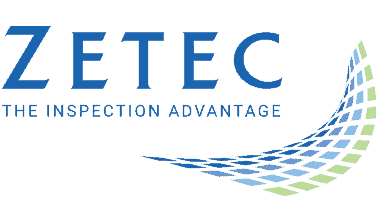Wall Thickness Measurement: How Ultrasonic Testing Maintains Critical Infrastructure

Any operation involving assets or infrastructure that deals with oil, water, or other chemicals is under constant threat of erosion. Ships near salt water or pipes ablated by sand face similar threats. What may seem like minute chemical or physical interactions can lead to costly damage.
Testing assets and infrastructure regularly is the best way to mitigate operational and safety risks. In order to monitor the integrity of these critical assets to operations, non-destructive testing (NDT) is the best method as it involves little to no downtime. There are many methods of NDT but ultrasonic testing (UT) is the most effective solution for corrosion and erosion detection via wall thickness measurement. Ultrasonic thickness testing can assist in ensuring infrastructure viability.
The Need for Wall Thickness Measurement
Diminished thickness is an issue that can affect nearly any manufacturing or industrial industry, from pipelines to shipbuilding, and transportation. When the walls of a manufactured component are diminished, damage to structural integrity can follow.
This is most often caused by corrosion or erosion, whether by water, chemicals, or an abrasive material (like sand in pipelines). Components exposed to these elements have a high chance of being negatively impacted. If left unchecked, over time these minute scars and tiny diminishment of thickness can lead to operation failure—parts may break, systems can be shut down, and entire operations halted. This can be costly from a business point of view and, potentially, from a regulatory aspect. This kind of damage can also pose enormous safety risks. When infrastructure isn’t functioning properly, workers’ safety can be in jeopardy. This is where NDT comes in.
If done properly—and with the right equipment—a wall thickness measurement can reveal the presence of a small flaw before it turns into a larger problem. Proper inspection requires regular testing and doing so can be cost-effective, and in many fields, required. That’s why it is hugely important to find an NDT methodology that gets the job done without undue cost and effort.
The Role of Ultrasonic Testing
There are a few different types of nondestructive testing techniques to measure wall thickness. All have their benefits; some have a lot of extra weaknesses. Eddy current for thickness testing is one of the more popular methods, but even that has its limitations (especially with regards to non conductive materials).
Ultrasonic testing can remove most of those limitations. It is true that ultrasonic testing does have thickness limitations (as does any testing), but those limitations aren’t usually reached. Phased array ultrasonic testing (PAUT) just goes further into a wall in order to get a more correct assessment.
Why is phased array ultrasonic testing a top technique for thickness measurement, including corrosion mapping? There are a number of reasons.
- More adaptable scanners: Scanners that can move over both flat and curved surfaces—including oddly-shaped angles where materials intersect—mean the job can get done quicker and more efficiently. Furthermore, scanners that see the location of a probe in real-time and can detect very small losses in wall thickness can provide greater coverage confidence.
- Efficient data processing: When the scanner is paired with the right instrumentation, data can be rendered and processed in near real-time, giving the inspecting technician an accurate picture of the component being tested.
- Powerful reporting tools: Software that can store and compile programming to organize results into actionable reports is how a test turns into results, allowing technicians to identify the issue and determine a solution.
- Easy to use: Large-scale infrastructure can be hard to test. Ultrasonic equipment is quick to set up and relatively easy to use, helping technicians scan vast amounts of surfaces with minimal wear and tear.
Not only that, but the best-in-market ultrasonic testing equipment is rugged enough to withstand the same conditions that lead to the problems in the first place. The testing itself saves money; the lifespan of the equipment only adds to the overall ROI.
Efficient Wall Thickness Measurement with Ultrasonic Testing
In order to make the most out of your wall thickness measurement testing, you need the right ultrasonic testing equipment: a full suite of scanners, instrumentation, software, and auxiliary tools that can get the job done right.
Every job is different and could require different technologies. Cracks and flaws might need certain tools, but corrosion often demands a tool like an NDT paintbrush that can quickly cover large-scale surfaces and create a corrosion map.
An NDT paintbrush utilizes ultrasonic testing to create an accurate map of the component in question, allowing a technician to quickly scan over a surface much like how one uses a paintbrush. With these easy motions combined with encoded wheels, they can quickly cover the whole surface. The powerful image stitching capabilities of the instrumentation means visualizing the totality of the area and any issues leading to more informed solutions.
Zetec is a major provider of portable phased array ultrasonic NDT technology to simplify thickness tests for multiple industries. Contact us today to get the best equipment and the top solutions for your industry needs.
